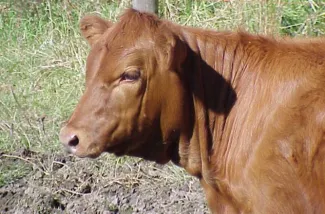
Exotic tick that can kill cattle spreading across Ohio
(Ohio News Connection) A species of exotic tick arrived in Ohio in 2021 in such huge numbers that their feeding frenzy on a southeastern farm left three cattle dead of what researchers believe was severe blood loss. Researchers say the pests, known as Asian longhorned ticks, can be as small as a sesame seed. They were first detected in the U.S. in New Jersey in 2017.
Risa Pesapane, assistant professor of veterinary preventive medicine at Ohio State University, first found the ticks on a stray dog in Gallia County three years ago. Now, they've spread to at least eleven counties, making complete eradication nearly impossible, she said.

"We're going to have to come up with options to manage that problem for those who have significant infestations," Pesapane continued.
More information about spotting Asian longhorned ticks and preventing tick exposure is available on Ohio State's "Bite Site" website. Ohioans are encouraged to help with research efforts. People who think they've spotted an Asian longhorned tick can email 'ticks@osu.edu' for instructions on how to collect the specimen and send it to scientists as part of ongoing surveillance.
Asian longhorned ticks tend to favor large livestock and wildlife, such as cattle and deer. Just a handful of ticks out of more than 100 screened for infectious agents tested positive for pathogens. Pesapane added that so far the ticks are not deemed to be a threat to human health.
"It does not seem to be especially interested in biting people. But this is a rapidly evolving situation with this tick. And we're very cautiously observing, and documenting what its impact might be for humans and companion animals," Pesapane said.
But she added, they are a potential threat to farmers and people working with animals because of their ability to rapidly reproduce asexually, with each female laying up to two thousand eggs at a time. Pesapane and colleagues collected almost ten thousand ticks within about 90 minutes on a Monroe County farm.
















